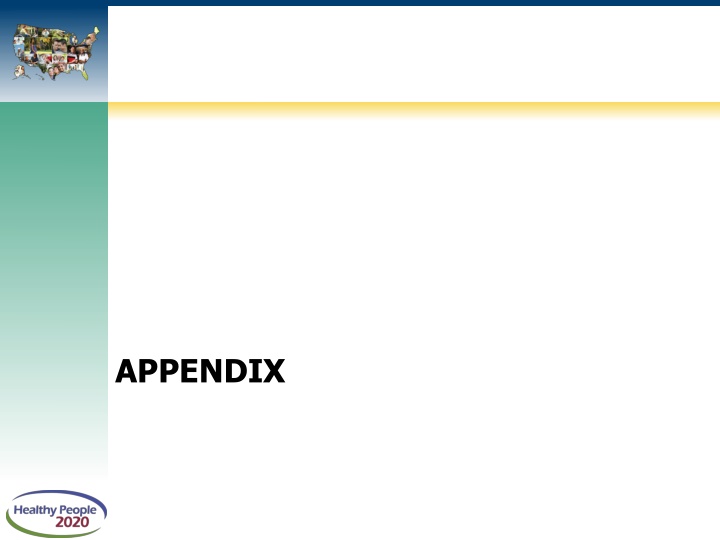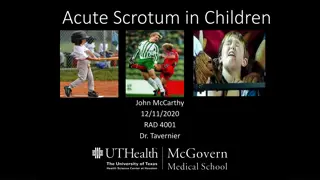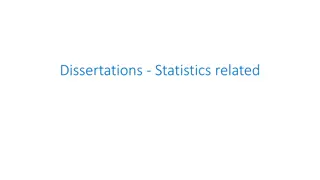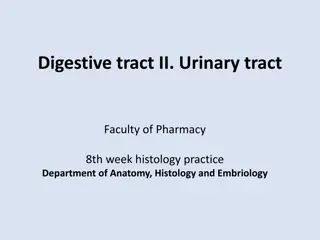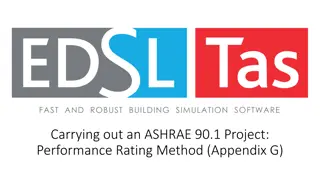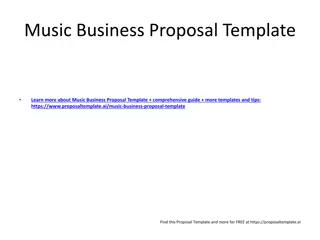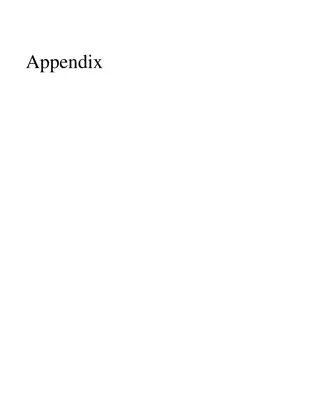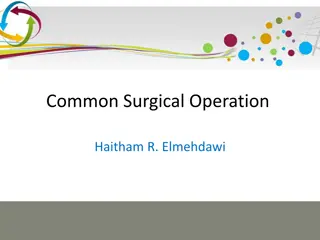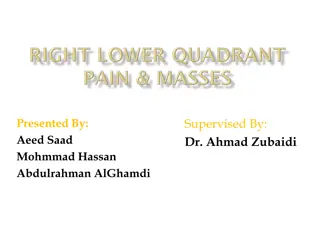APPENDIX
In this educational and community-based program, schools and institutions focus on preventing health problems in areas such as unintentional injury, violence, and unhealthy behaviors. The goal is to equip students with essential knowledge and skills related to health promotion and disease prevention. Additionally, the program emphasizes personal health and wellness through various initiatives like hand hygiene, oral health, and sun safety. Monitoring and maintaining a healthy environment is key in achieving the objectives set for improving health outcomes in schools and universities.
Download Presentation

Please find below an Image/Link to download the presentation.
The content on the website is provided AS IS for your information and personal use only. It may not be sold, licensed, or shared on other websites without obtaining consent from the author.If you encounter any issues during the download, it is possible that the publisher has removed the file from their server.
You are allowed to download the files provided on this website for personal or commercial use, subject to the condition that they are used lawfully. All files are the property of their respective owners.
The content on the website is provided AS IS for your information and personal use only. It may not be sold, licensed, or shared on other websites without obtaining consent from the author.
E N D
Presentation Transcript
Objective Status: Educational and Community-Based Programs Target met Improving Little/No change Getting worse Baseline only Developmental Informational ECBP-2- Elementary, middle, and senior high schools that provide comprehensive school health education to prevent health problems in the following areas: ECBP-2.1- all priority areas ECBP-2.2- unintentional injury ECBP-2.3- violence ECBP-2.4- suicide ECBP-2.5- tobacco use and addiction ECBP-2.6- alcohol and other drug use ECBP-2.7-unintended pregnancy, HIV/AIDS, and STDs ECBP-2.8- unhealthy dietary patterns ECBP-2.9- physical activity ECBP-3- Elementary, middle, and senior high schools that have health education goals knowledge and skills in the following areas: ECBP-3.1- health promotion and disease prevention ECBP-3.2- health promoting products and services ECBP-3.3- personal, family, & community health ECBP-3.4- influence of culture, media, and technology ECBP-3.5-practicing health- enhancing behaviors and reducing health risks ECBP-3.6- goal-setting and decision making skills ECBP-3.7- interpersonal communication skills ECBP-4- Elementary, middle, and senior high schools that provide school health education to promote personal health and wellness in the following areas: ECBP-4.1- hand washing or hand hygiene ECBP-4.2- oral health ECBP-4.3- growth and development ECBP-4.4- sun safety and skin cancer prevention ECBP-4.5- benefits of rest and sleep ECBP-4.6- ways to prevent vision and hearing loss ECBP-4.7- health screenings and checkups ECBP-5- Elementary, middle, and senior high schools that have a full-time registered school nurse-to-student ratio of at least 1:750 ECBP-5.1- elementary, middle, and senior high schools ECBP-5.2- senior high schools ECBP-5.3- middle schools ECBP-5.4- elementary schools EBCP-6- Completes high school education NOTES: Objectives ECBP-1.1 through 1.9 and ECBP-11 were archived and no longer being monitored due to lack of data source, changes in science, or replacement with other objectives.
Objective Status: Educational and Community-Based Programs Target met Improving Little/No change Getting worse Baseline only Developmental Informational ECBP-7- College and university students who receive information from their institution on each of the priority health risk behavior areas: ECBP-7.1- all priority areas ECBP-7.2- unintentional injury ECBP-7.3- violence ECBP-7.4- suicide ECBP-7.5- tobacco use and addiction ECBP-7.6- alcohol or other drug use ECBP-7.7- unintended pregnancy ECBP-7.8- HIV/AIDS and STD infection ECBP-7.9- unhealthy dietary patterns ECBP-7.10- inadequate physical activity ECBP-8- Worksites that offer an employee health promotion program to their employees. ECBP-8.1- worksites with fewer than 50 employees ECBP-8.2- worksites with 50 or more employees ECBP-8.3- worksites with 50 to 99 employees ECBP-8.4- worksites with 100 to 249 employees ECBP-8.5- worksites with 250 to 749 employees ECBP-8.6- worksites with 750 or more employees ECBP-9- Employees who participate in employer- sponsored health promotion activities ECBP-10- Community-based organizations (including local health departments, Tribal health services, nongovernmental organizations, and State agencies) providing population-based primary prevention services in the following area: ECBP-10.1- injury ECBP-10.2- violence ECBP-10.3- mental Illness ECBP-10.4- tobacco use ECBP-10.5- substance abuse ECBP-10.6- unintended pregnancy ECBP-10.7- chronic disease ECBP-10.8- nutrition ECBP-10.9- physical activity
Objective Status: Educational and Community-Based Programs Target met Improving Little/No change Getting worse Baseline only Developmental Informational ECBP-12- Inclusion of core clinical prevention and population health content in M.D.-granting medical schools: ECBP-12.1- disease prevention ECBP-12.2- cultural diversity ECBP-12.3- health sciences literature ECBP-12.4- environmental health content EBCP-12.5- public health systems ECBP-12.6- global health ECBP-13- Inclusion of core clinical prevention and population health content in D.O.-granting medical schools: ECBP-13.1- disease prevention ECBP-13.2- cultural diversity ECBP-13.3- health sciences literature ECBP-13.4- environmental health content ECBP-13.5- public health systems ECBP-13.6- global health ECBP-14- Inclusion of core clinical prevention and population health content in undergraduate nursing: ECBP-14.1- disease prevention ECBP-14.2- cultural diversity ECBP-14.3- health sciences literature ECBP-14.4- environmental health content ECBP-14.5- public health systems ECBP-14.6- global health ECBP-15- Inclusion of core clinical prevention and population health content in nursing practitioner training: ECBP-15.1- disease prevention ECBP-15.2- cultural diversity ECBP-15.3- health sciences literature ECBP-15.4- environmental health content ECBP-15.5- public health systems ECBP-15.6- global health ECBP-16- Inclusion of core clinical prevention and population health content in physician assistant training: ECBP-16.1- disease prevention ECBP-16.2- cultural diversity ECBP-16.3- health sciences literature ECBP-16.4- environmental health content ECBP-16.5- public health systems ECBP-16.6- global health ECBP-17- Inclusion of core clinical prevention and population health content in Doctor of Pharmacy granting colleges and schools of pharmacy: ECBP-17.1- disease prevention ECBP-17.2- cultural diversity ECBP-17.3- health sciences literature ECBP-17.4- environmental health content ECBP-17.5- public health systems ECBP-17.6- global health
Objective Status: Educational and Community-Based Programs Target met Improving Little/No change Getting worse Baseline only Developmental Informational ECBP-18- Inclusion of core clinical prevention and population health content in Doctor or Dental Surgery and/or Doctor of Dental Medicine granting colleges and schools of Dentistry: ECBP-18.1- disease prevention ECBP-18.2- cultural diversity ECBP-18.3- health sciences literature ECBP-18.4- environmental health content EBCP-18.5- public health systems ECBP-18.6- global health ECBP-19- Academic institutions with health professions education programs whose prevention curricula include inter-professional educational experiences
Current HP2020 Objective Status: Educational and Community-Based Programs 3% (n=3) 6% (n=7) Total number of objectives: 97 20% (n=18) Target met 8% (n=7) Improving 34% (n=31) Little/No change Getting worse Baseline only Developmental 16% (n=14) Informational 19% (n=17)
Objective Status: Health Communication and Health IT Target met Improving Little/No change Getting worse Baseline only Developmental HC/HIT-1.1-Persons who report their health care provider always gave them easy-to-understand instructions about what to do to take care of their illness or health condition HC/HIT-1.2- Persons who report their health care provider always asked them to describe how they will follow the instructions HC/HIT-1.3-Persons who report their health care providers office always offered help in filling out a form HC/HIT-2.1-Persons who report that their health care providers always listened carefully to them HC/HIT-2.2-Persons who report that their health care providers always explained things so they could understand them HC/HIT-2.3-Persons who report that their health care providers always showed respect for what they had to say HC/HIT-2.4-Persons who report that their health care providers always spent enough time with them. HC/HIT-3-Persons who report that their health care providers always involved them in decisions about their health care as much as they wanted HC/HIT-4-Patients whose doctor recommends personalized health information HC/HIT-5.1-Persons who use the Internet to keep track of personal health information, such as care received, test results, or upcoming medical appointments HC/HIT-5.2-Persons who use the Internet to communicate with their health provider HC/HIT-6.1-Persons with access to the Internet HC/HIT-6.2-Persons with broadband access to the Internet HC/HIT-6.3-Persons who use mobile devices HC/HIT-7-Adults who report having friends or family members with whom they talk about their health HC/HIT-8.1-Health-related websites that meet three or more evaluation criteria for disclosing information that can be used to assess information reliability HC/HIT-8.2-Health-related websites that follow established usability principles HC/HIT-9-Online health information seekers who report easily accessing health information HC/HIT-10-Medical practices that use electronic health records HC/HIT-12.1-Crisis and emergency risk messages embedded in print and broadcast news stories that explain what is known about the threat to human health HC/HIT-12.2-Crisis and emergency risk messages embedded in print and broadcast news stories that explain what is NOT known about the threat to human health
Objective Status: Health Communication and Health IT Target met Improving Little/No change Getting worse Baseline only Developmental HC/HIT-12.3-Crisis and emergency risk messages embedded in print and broadcast news stories that explain how or why a crisis or emergency event happened HC/HIT-12.4-Crisis and emergency risk messages embedded in print and broadcast news stories that promote steps the reader or viewer can take to reduce their personal health threat HC/HIT-12.5-Crisis and emergency risk messages embedded in print and broadcast news stories that express empathy about the threat to human health HC/HIT-12.6-Crisis and emergency risk messages embedded in print and broadcast news stories that express commitment from the responsible or responding entity HC/HIT-13.1-State health departments that report using social marketing in health promotion and disease prevention programs HC/HIT-13.2-Schools of public health and accredited master of public health (MPH) programs that offer one or more courses in social marketing HC/HIT-13.3-Schools of public health and accredited MPH programs that offer workforce development activities in social marketing for public health practitioners
Current HP2020 Objective Status: Health Communication and Health IT 11% (n=3) Total number of objectives: 28 29% (n=8) 32% (n=9) Target met Improving Little/No change Getting worse Baseline only Developmental 14% (n=4) 11% (n=3) 4% (n=1)
